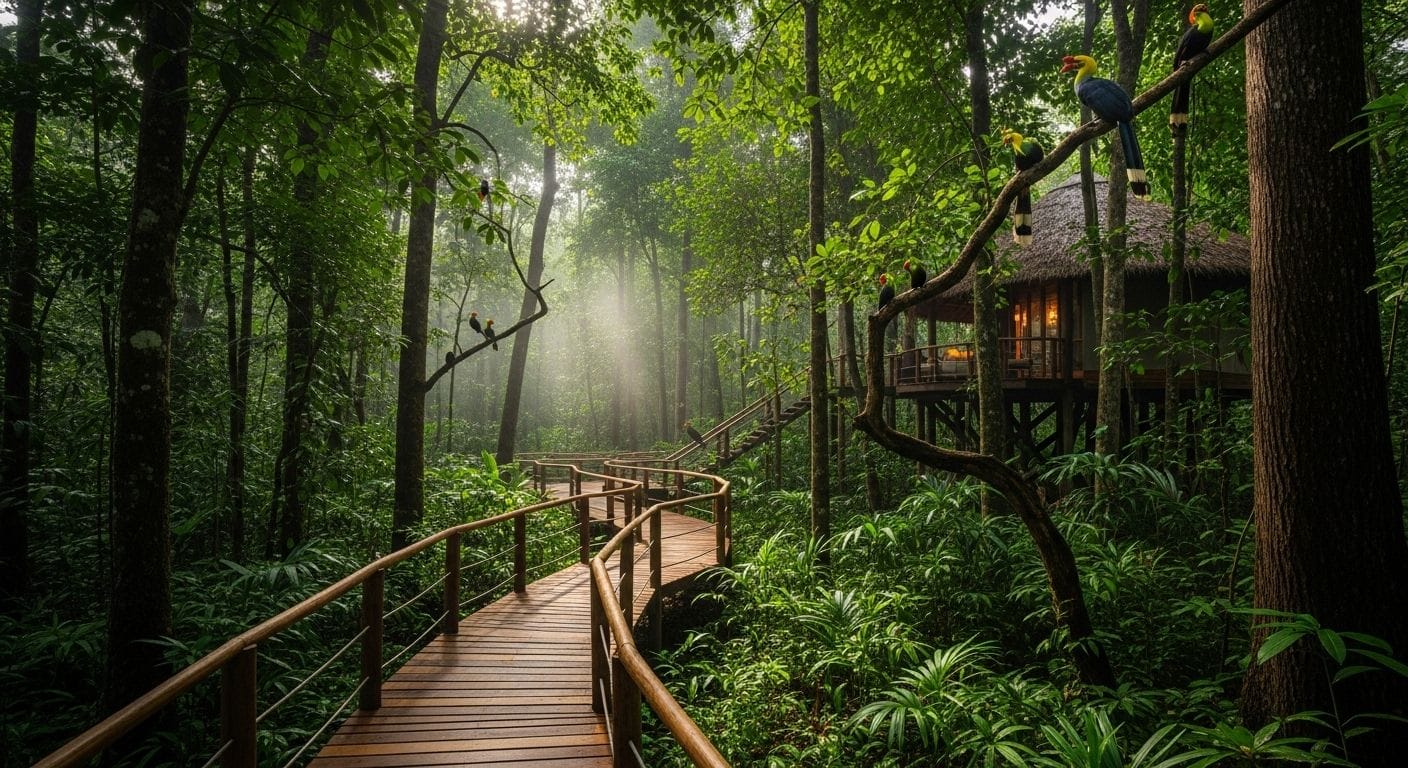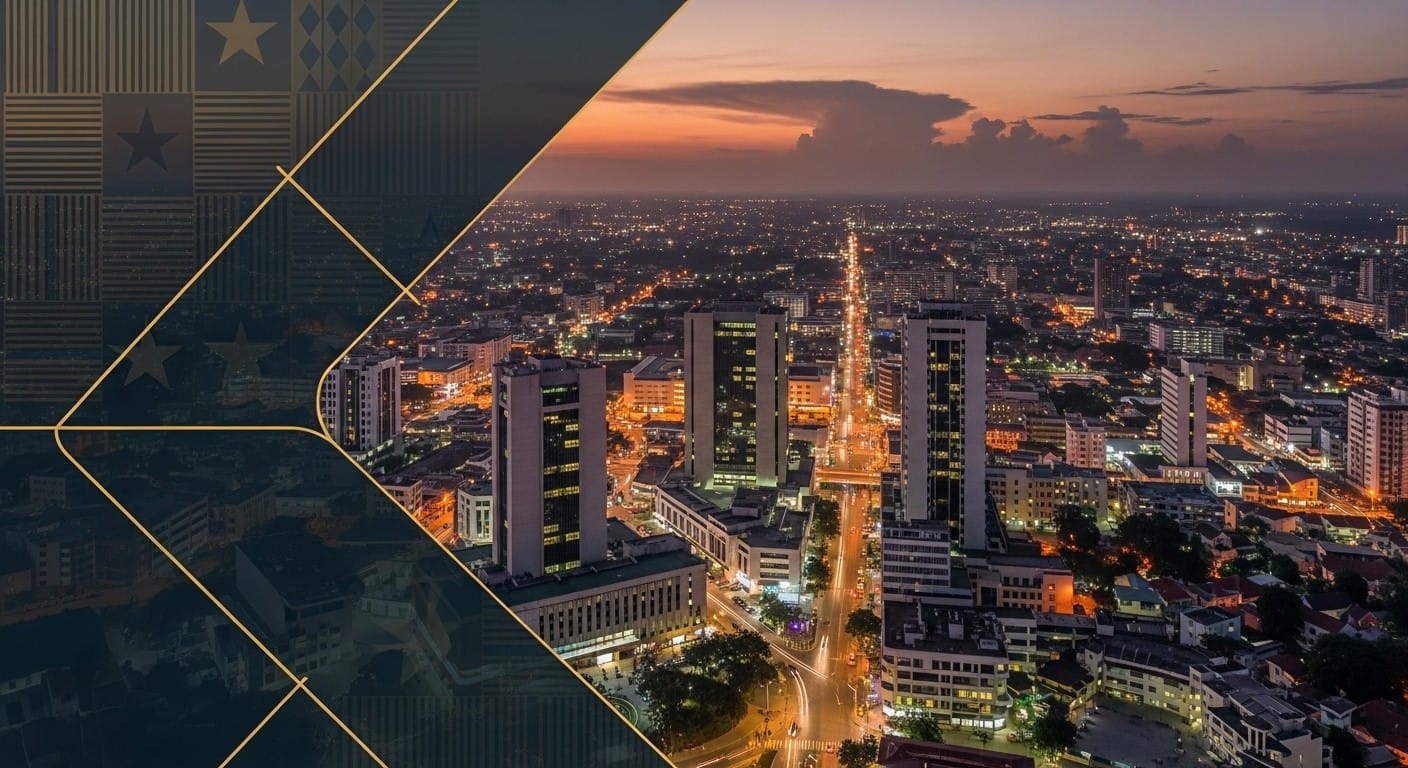Ghana’s Secret Sanctuaries: 7 Top Hidden Parks Beyond Kakum & Mole
When you think of Ghana’s natural wonders, the thrilling Kakum National Park at Kakum National Park and the majestic elephants of Mole National Park are likely the first images that come to mind. While these iconic destinations are must-sees, they represent only a fraction of the country’s rich biodiversity. Ghana is dotted with incredible, yet often overlooked, natural reserves and community-led sanctuaries that offer more intimate and unique wildlife experiences. For the traveler eager to step off the well-trodden path, a world of pristine waterfalls, sacred monkey forests, and remote wilderness awaits. This guide unveils the top hidden parks Waterfalls in Ghana beyond Kakum & Mole, inviting you to discover the country’s best-kept secrets.
1. Kyabobo National Park: The Oti Region’s Best Kept Secret
Tucked away in the Kyabobo National Park near the Togo border, Kyabobo National Park is a true undiscovered gem. The park’s guest registry logged only about 300 visitors over a five-year period, meaning you can often have this 220-square-kilometer paradise almost to yourself. Kyabobo is unique for its blend of savanna and forest ecosystems, with over 60% of its area covered by mountains.
- The Breast Mountains Hike: One of the park’s signature experiences is the 7km round-trip hike to the “Breast Mountains.” The trail leads you to a lookout point on the “left breast,” aptly named “Nipple Rock,” offering breathtaking panoramic views where you can see the landscape transition from lush southern forests to open northern savanna.
- Wildlife & Biodiversity: While not known for large game sightings, Kyabobo is a sanctuary for red-river hogs, various duikers, baboons, and monkeys. It’s a haven for enthusiasts of smaller creatures, boasting an incredible 235 bird species and over 300 butterfly species, including one discovered within the park itself.
2. The Volta Region’s Waterfall Havens
The lush, topographically diverse Wli Waterfalls is home to some of Ghana’s most spectacular waterfalls and community-based ecotourism sites, offering refreshing escapes from the city buzz.
Agumatsa Wildlife Sanctuary (Wli Waterfalls)
Famous for hosting the Wli Waterfalls, the tallest waterfall in Ghana, this sanctuary is a premier attraction in the region. A gentle walk through the forest leads you to the impressive lower falls. For the more adventurous, a challenging hike reveals the upper falls and rewards you with stunning views. The cliffsides are home to a massive colony of fruit bats, and their departure at dusk is a sight to behold.
Tagbo and Ote Waterfalls
For a quieter, more offbeat experience, head to Tagbo Falls. The journey involves a scenic trek through cocoa farms and dense forest, making the arrival at the cascading falls feel even more rewarding. Nearby, in Amedzofe—Ghana’s highest habitable settlement—you can find the Ote Waterfall. This hidden gem is less developed for tourism, offering a serene and personal encounter with nature.
3. Sacred Sanctuaries: Where Culture and Conservation Meet
Ghana is a pioneer in community-based ecotourism, creating a symbiotic relationship between conservation, tourism, and local communities. These sanctuaries offer a profound look at how tradition can protect nature.
Boabeng-Fiema Monkey Sanctuary
In the Brong-Ahafo Region, the twin villages of Boabeng and Fiema protect sacred troops of Mona and Black-and-White Colobus monkeys. The monkeys are considered children of the local deities and are never harmed. This belief system has preserved the forest and its primate inhabitants for generations, allowing visitors to get remarkably close to these playful creatures.
Wechiau Hippo Sanctuary
Located in the far Upper West Region, this community-protected area covers a 40km stretch of the Black Volta River. It was established to protect one of the two remaining hippo populations in Ghana. A river safari provides the best chance to see these magnificent animals. A visit here directly supports the local community and their vital conservation efforts.
4. A Deeper Dive: Exploring More Undiscovered Natural Reserves in Ghana
Beyond the waterfalls and sanctuaries, several other national parks offer unique ecosystems and wildlife viewing opportunities with far fewer crowds. These reserves showcase the sheer diversity of Ghana’s landscapes.
| Park/Reserve Name | Region | Key Features & Wildlife |
|---|---|---|
| Bui National Park | Bono & Savannah | The third largest park, bisected by the Black Volta River. It is notable for its significant hippo population, endangered black and white colobus monkeys, and a variety of antelopes. |
| Bia National Park | Western North | Ghana’s only Biosphere Reserve, featuring a mix of moist-evergreen and semi-deciduous forest. It is home to Bia National Park, the highly threatened bongo, and 10 primate species, including chimpanzees. |
| Shai Hills Resource Reserve | Greater Accra | One of the most accessible reserves from Accra. A range of rocky hills set in a sprawling savanna plain. Excellent for viewing baboons, antelopes (bushbuck, kobs), and a variety of birds. Also features caves and great viewpoints. |
| Kogyae Strict Nature Reserve | Ashanti | A critical “barrier reserve” on the forest-savanna transition zone. While it has faced conservation challenges, it tells a powerful story of forest recovery and woody encroachment, making it a key site for scientific research. |
Why Venture Off the Beaten Path?
Choosing to explore these lesser-known destinations does more than just provide a unique travel story. It offers tangible benefits:
- Authentic Experiences: With fewer tourists, you can connect more deeply with the environment and local culture.
- Support for Communities: Many of these sites, like Wechiau and Boabeng-Fiema, are community-run. Your visit provides a sustainable income that incentivizes further conservation.
- The Joy of Discovery: As travel writer Maame Adjei noted, some of the best adventures are in our own backyard. The journey to these lesser-known Ghanaian parks is a reward in itself, revealing the raw, untapped beauty of the country.
While Kakum and Mole are rightfully celebrated, the soul of Ghana’s wilderness can also be found in its secret corners. Exploring these hidden parks, waterfalls, and sanctuaries offers a chance to see a different side of the nation—one that is wild, authentic, and profoundly rewarding. The rich variety of Ghana’s hidden parks natural attractions proves that the greatest adventures often lie just beyond the familiar horizon.











